Italian Ways Read online
CONTENTS
ABOUT THE BOOK
ABOUT THE AUTHOR
ALSO BY TIM PARKS
LIST OF MAPS
DEDICATION
TITLE PAGE
PREFACE
* * *
PART ONE / THE TRAIN OF THE LIVING DEAD
* * *
CHAPTER 1
Verona–Milano
CHAPTER 2
Milano–Verona
* * *
PART TWO / FIRST CLASS, HIGH SPEED
* * *
CHAPTER 3
Verona–Milano
CHAPTER 4
Milano–Firenze
* * *
PART THREE / TO THE END OF THE LAND
* * *
CHAPTER 5
Milano–Roma–Palermo
CHAPTER 6
Crotone–Taranto–Lecce
CHAPTER 7
Lecce–Otranto
EPILOGUE
ACKNOWLEDGEMENTS
COPYRIGHT
About the Book
In Italian Ways, bestselling writer Tim Parks brings us a fresh portrait of Italy today through a wry account of his train journeys around the country. Whether describing his daily commute from Milan to Verona, his regular trips to Florence and Rome, or his occasional sojourns to Naples and Sicily, Parks uses his thirty years of amusing and maddening experiences on Italian trains to reveal what he calls the ‘charmingly irritating dystopian paradise’ of Italy.
Through memorable encounters with ordinary Italians – conductors and ticket collectors, priests and prostitutes, scholars and lovers, gypsies and immigrants – Parks captures what makes Italian life distinctive. Italian Ways also explores how trains helped build Italy and how the railways reflect Italians’ sense of themselves from Garibaldi to Mussolini to Berlusconi and beyond. Most of all, Italian Ways is an entertaining attempt to capture the essence of modern Italy.
About the Author
Born in Manchester, Tim Parks grew up in London and studied at Cambridge and Harvard. In 1981 he moved to Italy where he has lived ever since. He is the author of novels, non-fiction and essays, including Europa, Cleaver, A Season with Verona and Teach Us to Sit Still. He has won the Somerset Maugham, Betty Trask and Llewellyn Rhys awards, and been shortlisted for the Booker Prize. He lectures on literary translation in Milan, writes for publications such as the New Yorker and the New York Review of Books, and his many translations from the Italian include works by Moravia, Calvino, Calasso, Tabucchi and Machiavelli.
Also by TIM PARKS
FICTION
Tongues of Flame
Loving Roger
Home Thoughts
Family Planning
Goodness
Cara Massimina
Mimi’s Ghost
Shear
Europa
Destiny
Judge Savage
Rapids
Cleaver
Dreams of Rivers and Seas
Sex is Forbidden (first published with the title The Server)
NON – FICTION
Italian Neighbours
An Italian Education
Adultery and Other Diversions
Translating Style
Hell and Back
A Season with Verona
The Fighter
Teach Us to Sit Still
LIST OF MAPS
Fig. 1 Italy
Fig. 2 Northern Italy
Fig. 3 Central Italy
Fig. 4 Southern Italy
For all those who love to read on trains
PREFACE
A TRAIN IS a train is a train, isn’t it? Parallel lines across the landscape, wheels raised on steel, the power and momentum of the heavy locomotive leading its snake of carriages through a maze of switches, into and out of the tunnels, the passenger sitting a few feet above the ground, protected from the elements, hurtled from one town to the next while he reads a book or chats to friends or simply dozes, entirely freed from any responsibility for speed and steering, from any necessary engagement with the world he’s passing through. Surely this is the train experience everywhere.
Yet only in India have I been able to stand at an open door as the carriage rattles and sways through the sandy plains of Rajasthan. The elegant melancholy of the central station in Buenos Aires, designed in a French style by British architects, its steel arches shipped from distant Liverpool, has much to tell about Argentina past and present. Certainly the history and zeitgeist of Thatcher’s and then Blair’s England could very largely be deduced from the present confusion of the country’s overpriced, clumsily privatised, manifestly unhappy railways. In America the lack of investment in train travel speaks eloquently of a country always ready to appear righteous but pathologically averse to surrendering car and plane for a more eco-friendly, community-conscious form of mobility.
The train arrived in Italy in 1839 with four and a half miles of line under the shadow of Vesuvius from Naples to Portici, followed in 1840 by nine miles from Milan to Monza. Borrowing from the English, the Italians coined the word ferrovie, literally ‘ironways’. Unlike the English they had little iron for rails, almost no coal to drive the trains, and only a fraction of the demand for freight and passenger transport that the English Industrial Revolution had generated. It was hard to fill the trains and harder still to run them at a profit. But where business wasn’t good there was politics. The Risorgimento process that aimed to unite the peninsula’s separate, often foreign-run states into a single nation was in full swing; all sides in the struggle understood that rapid communication would encourage and later consolidate unification. There were also military considerations. What better way to move a large body of men quickly than in trucks on rails?
So railway building was almost always politically motivated, which again made the commercial side of the operation more difficult. After unification, debates over the routes of strategic lines offered a new battleground for an ancient campanilismo, that eternal rivalry that has every Italian town convinced its neighbours are conspiring against it. Amid all the idealism and quarrelling, by the end of the nineteenth century the railway unions had become the biggest and most militant in the country and hence would play an important role in the struggle between socialism and Fascism; after the Second World War they became central to the government’s policy of keeping the electorate happy by creating non-existent jobs and awarding generous salaries and pensions. More than one person has claimed that the whole history of Italy as a nation state could be reconstructed through an account of the country’s railways.
But this is not a history book, nor exactly a travel book, though there is travel and history in it. Nor did I plan it and set to work on it in quite the same way I did with my other books on Italy. A few words of explanation are in order for the passenger who has just purchased his ticket and climbed on board Italian Ways.
My first sight of Italy came through the windows of a train. It was dawn on a summer morning in 1974. I had been dozing through France and woke near Ventimiglia to see the light greying on the Côte d’Azur as we flew over viaducts and through tunnels. It wasn’t the first time I had seen palm trees, but one of the first. I was nineteen and travelling alone on an InterRail pass. Having met two likely Lancashire girls who had it in their heads to see the Byzantine mosaics in Ravenna, I tagged along with them, not appreciating that such a cross-country trip ran absolutely against the grain of Italy’s topography and traffic flow; only a masochist would attempt to get from Ventimiglia to Ravenna by rail.
A few days later, on the platform at Firenze Santa Maria Novella, I bought a flask of Chianti with two German boys, the kind of wine they sell in bellied bottles with straw aprons, and after no more than a couple of swigs passed out, to wake up in my vomit three
hours later in the corridor of an evening Espresso to Rome. Those were the days, fortunately long over, when cheap wine might be cut with almost anything. I spent that night in a sleeping bag on a patch of grass outside Roma Termini with thirty or forty other travellers, and while I slept, my shoulder bag, which was looped around my neck, was razored away; when I woke I had lost my shoes, guidebook and passport, but not my wallet, which was in my underpants. That morning my bare feet burned on the scorching tar as I began the first of many bureaucratic odysseys in this country that years later would become my home. Of the language I knew not a word. These were rites of passage; I had been delivered into my Italian future by train.
I have now lived in Italy for thirty-two years. There are plateaus, then sudden deepenings; all at once a corner is turned and you understand the country and your experience of it in a new way. You could think of it as a jigsaw puzzle in four dimensions; the ordinary three, plus time: you will never fill in all the pieces, if only because the days keep rolling by, yet the picture does seem more complete and above all denser and more convincing with every year. You’re never quite a native, but you’re no longer a stranger. So just as my knowledge of Italian literature has slowly extended from the novels of Natalia Ginzburg and Alberto Moravia, which I read to learn the language, underlining every word, back through the masterpieces of Svevo and Verga, Manzoni and Leopardi, then further and further into the past until I was finally ready for Dante and Boccaccio, likewise my knowledge of le ferrovie italiane has extended and deepened and intensified. It’s not a question any more of liking or hating them; these ironways are family.
At first train travel was just a chore. In 1992 I gave up language teaching at the University of Verona for a career track job at a university in Milan. With small children we didn’t want to move to the big city, so I was condemned to commuting two or three times a week. I had no idea then that Italian railways were hitting an all-time low and even less knowledge of the reasons why that was so. I just suffered and of course laughed, since laughter is preferable to tears, and more sustainable. But often I enjoyed too: for to move on rails through a beautiful landscape is always a pleasure, and strangely conducive to reading, which is a major part of my life. Plus there was this: the deeper you get into a country, the more every new piece of information, every event and discovery, arrives as a fascinating confirmation, or challenge: how can I reconcile this bizarre thing that has happened with what I already know about the place? What might have seemed trivial or merely irritating the first year you were here now enriches and shifts the picture.
I began to take notes. I began to think that if someone wanted to understand Italy they might start by understanding how the train ticketing system works, or by listening to the platform announcements at Venezia Santa Lucia and Roma Termini, the strange emphasis given to certain names, the completely impractical order in which information is presented. In 2005 the magazine Granta asked me to write a travel piece and, cheating a little, because this was not strictly travel writing, I had a chance to use my jottings. Out of character, I wrote four times as much as they wanted, 120 pages, far too much for a magazine piece, not really enough for a book; but then I hadn’t been thinking of a book; I was just having fun, so much more fun than I’d expected, writing about the railways, the Italian way of running their railways. Granta published a fragment.
Seven years later, Italian trains have changed enormously, Italy has changed, as have Europe and the world. Not to mention the author. Last year I came back to the book that wasn’t quite a book. Were these pages simply out of date? Or could the difference between the way things were then and the way they are now be used to show something that has always fascinated me: how national character manifests itself most clearly when the things you thought couldn’t change finally do. If you look at the way high-speed trains are being introduced into Italy while the regional services languish, if you look at the way the mobile phone is used in the business-class compartments of a Milano–Roma Frecciarossa, if you look at how ticketing has been computerised and watch the way the frightening old on-board inspectors deal with it, if you travel the south coast of Calabria and Puglia and see how European Community money has been spent or misspent on the deserted railways, again and again, for good or ill, there it is, undeniably, the Italian way of doing things.
That is what I have tried to capture in this book.
Part One
THE TRAIN OF THE LIVING DEAD
2005
Chapter 1
VERONA–MILANO
ITALIANS COMMUTE. EVERY September I receive a letter from the administration of the university where I teach, in Milan, reminding me that since I am not resident in the city, I have to apply for a nullaosta for the forthcoming year. This piece of paper, signed by the rector himself, will say that nulla ostacola … nothing prevents me from working in Milan while living a hundred miles away, in Verona.
What on earth could prevent me? Only Trenitalia, the railways.
As so often in Italy, there is no official form to fill in; you have to make up the request yourself. This can cause anxiety when Italian is not your mother tongue and you are aware that there may be special formulas and terms of address. A university lecturer does not wish to seem inept.
‘What if I just ignore it?’ I once asked a colleague. ‘It’s only a formality.’
That was many years ago, in the nineties. I was innocent then. It was explained to me that in Italy a formality is a sort of dormant volcano. It might seem harmless for years, then suddenly blow your life away. So, one day, if I misbehaved in class, or supported the wrong candidate in some hotly disputed faculty election, the rector might decide that Trenitalia really wasn’t reliable enough for me to be resident in Verona and work at the university in Milan. In the same way, in Italy, after years of neglect, certain laws on accounting or political-party fund-raising might quite suddenly be vigorously enforced for reasons that have little to do with someone’s having broken the law. Never say only a formality.
Rather discouragingly, the colleague who enlightened me with this dormant volcano analogy later suggested that I might want to apply for an available lectureship in Lecce. Disturbed, I pointed out that if Milan was a hundred miles from Verona, Lecce was six hundred. At that point surely the nullaosta would not be a formality at all. ‘There’s an overnight train, Verona–Lecce,’ I was told. ‘No problem. You could go twice a week. Or stay the week and come home at weekends.’
It was a serious proposition. Hundreds of thousands of Italians do this. In Milan I have colleagues who are resident in Rome, in Palermo, in Florence. I have students who return to Naples or Udine every weekend. Thousands upon thousands of miles are travelled. Italians like to live where they live – where they were born, that is – with Mamma and Papà. Then they commute. Even when it offers no work, your home town is always the best town; a thick web of family ties and bureaucracy anchors you there. Trenitalia connects these city states. It makes the nation possible and allows it to remain fragmented, allows people to live double lives. Not for nothing is the holding company called Le Ferrovie dello Stato. State railways. Nulla ostacola.
TO BE PRESENT AT a nine o’clock lesson or thesis commission in Milan, I have to get the 6.40 Interregionale from Verona Porta Nuova to Genova Piazza Principe. It’s the train of the living dead. But at least, leaving home at six, many of the city’s traffic lights are still only flashing yellow. You can move. You can even stop moving and park.
Verona’s main station was rebuilt, like the roads around it and the nearby stadium, for football’s 1990 World Cup. The cup took place before the roads were finished, at which point urgency if not interest was lost. The big teams of the time didn’t come to Verona. I vaguely recall Belgium beating Uruguay. I can’t remember the names of the other teams. Did anybody go and watch? In all my later years as a season-ticket holder at the stadium no one has mentioned these games. But the hastily conceived road system will be with us for decades to come, an underpass on
a tight bend that has claimed a dozen lives, and likewise the attractive stone floor inside Verona Porta Nuova Station. It’s made of small dark metamorphic slabs that mix a highly polished, almost mirror finish with mottling patches of rough gritty brown. Very stylish. When the Tangentopoli, or Bribesville, crackdown on political corruption began in the early nineties, it was suggested that much of the building for the World Cup in Verona had involved the mayor and his cronies giving contracts to friends and relatives. No one paid more than a brief visit to jail. No one really thought that this was an especially bad thing to have done.
Alas, even at 6.15 in the morning there’s an impossibly long queue at the ticket windows. The serious commuter has to have a season ticket. But what kind of season ticket? In England now there are different tickets for different trains run by different companies. There is the confusion and clamour of free enterprise, and, in an attempt to balance supply and demand, there are differently priced tickets for peak and off-peak travel. This is annoying, but comprehensible and all very Anglo-Saxon. In Italy the complications are of a different nature. Truly to get a grip on them would be to understand Italian politics and social policy since the Second World War.
First and foremost, train tickets must be cheap, and be seen to be so. People’s desire to live in one city while working in another, coupled with the fact that Italian salaries are among the lowest in the European Community, require this. A student has to be able to afford to travel home every weekend or every other. The friends you make at primary school are your friends for life. You can’t be without them. Who will do your laundry, if not your dear mother? There are few launderettes in Italy. So to travel from Verona to Milan – 148 kilometres, my ticket tells me, or about 92 miles – costs only €6.82, peak or off-peak, weekend or weekday.fn1 About £5 at the time of writing. It’s cheap.

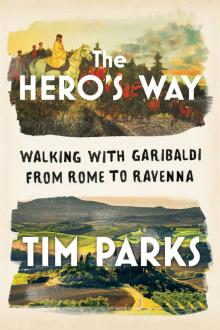 The Hero's Way
The Hero's Way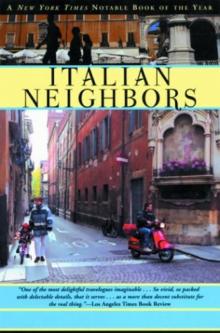 Italian Neighbors
Italian Neighbors Goodness
Goodness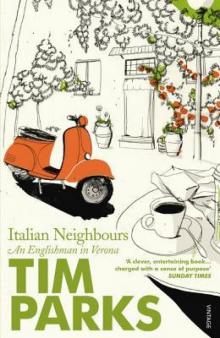 Italian Neighbours_An Englishman in Verona
Italian Neighbours_An Englishman in Verona Italian Neighbours
Italian Neighbours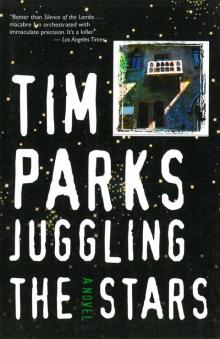 Juggling the Stars
Juggling the Stars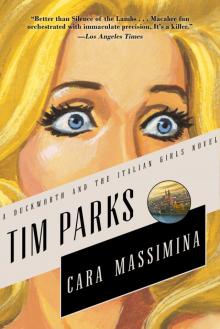 Cara Massimina
Cara Massimina Cleaver
Cleaver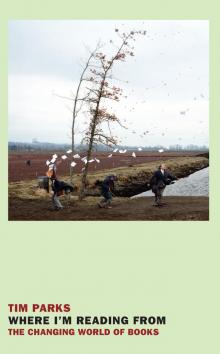 Where I'm Reading From
Where I'm Reading From Dreams of Rivers and Seas
Dreams of Rivers and Seas The Fighter
The Fighter In Extremis
In Extremis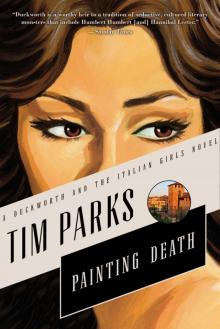 Painting Death
Painting Death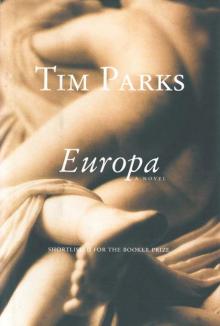 Europa
Europa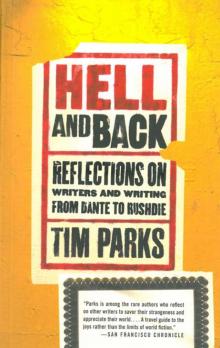 Hell and Back
Hell and Back Judge Savage
Judge Savage Thomas and Mary
Thomas and Mary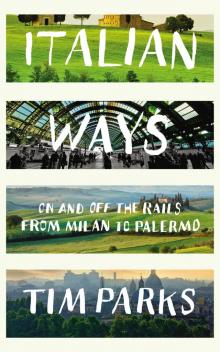 Italian Ways
Italian Ways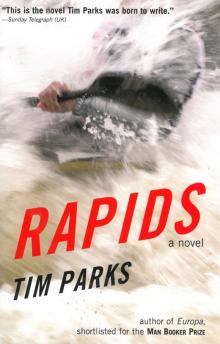 Rapids
Rapids Mimi's Ghost
Mimi's Ghost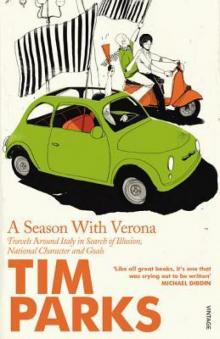 A Season With Verona
A Season With Verona Teach Us to Sit Still
Teach Us to Sit Still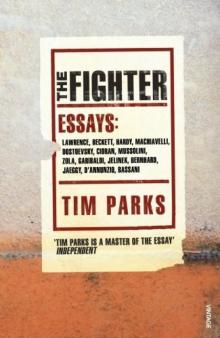 The Fighter_Literary Essays
The Fighter_Literary Essays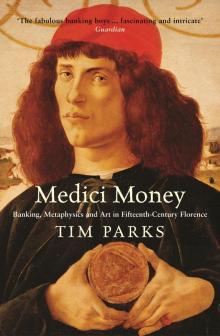 Medici Money
Medici Money